Home Maintenance Checklist for March
Following an annual maintenance routine helps homeowners avoid costly repairs, property damage, and keeps home a happy, healthy, and safe place for family and visitors alike.

In New York, some March days are perfect for outdoor adventures, while other March days practically demand cozy indoor activities. Take advantage of the unpredictable weather we can always rely on to tackle home maintenance tasks both indoors and out to ensure your home stays in top shape as we spring forward this month.

March Focus
We’re making the most of the variations in weather patterns to complete our transition from winter to spring. You may have completed some of these tasks in February – so feel free to check them off your list now!
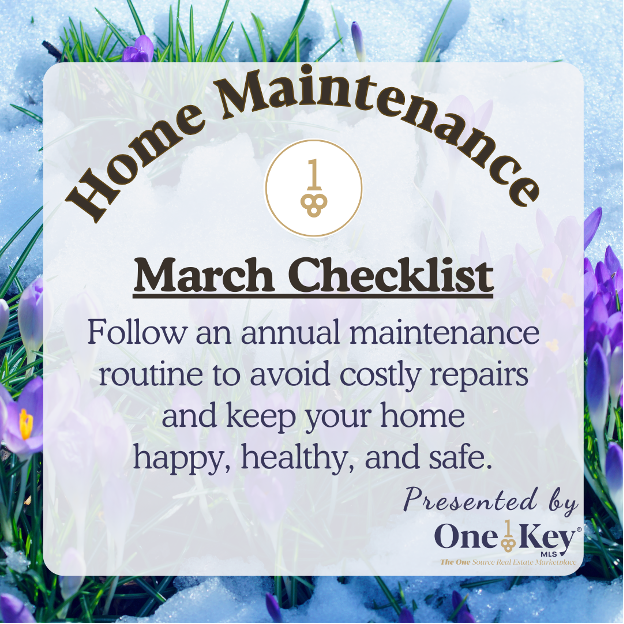
March Home Maintenance: Inside Tasks
- Inspect and Service HVAC Systems: Regular maintenance of heating, ventilation, and air conditioning units and systems ensures they’re operating efficiently and helps prevent costly breakdowns or interruptions in service. This is also the time to clean or change out air and water filters.
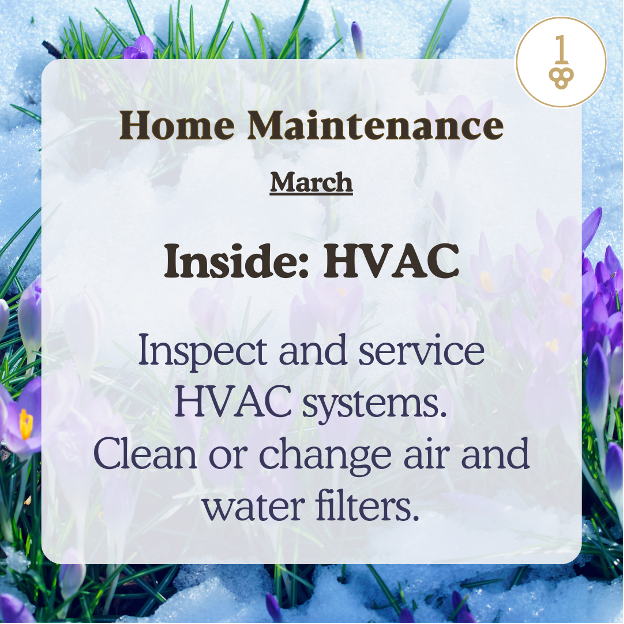
- Check and Replace Batteries: Change smoke detector and carbon monoxide detector batteries to ensure they’re functioning properly to alert you to potential dangers. This is crucial for home safety. A good rule of thumb is to check the batteries when you change your clocks 2x yearly.
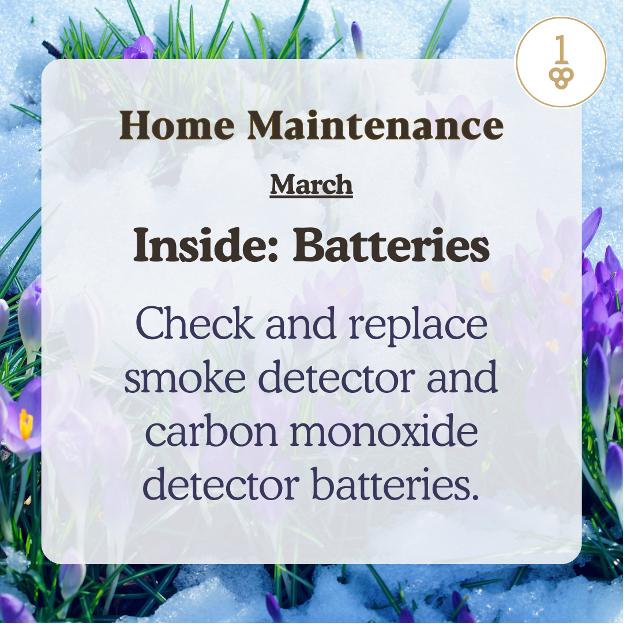
- Windows: Inspect windows and window screens. Patch any holes and reattach loose mesh. Check that the frames are undamaged and securely attached and that the hardware is tightened appropriately.
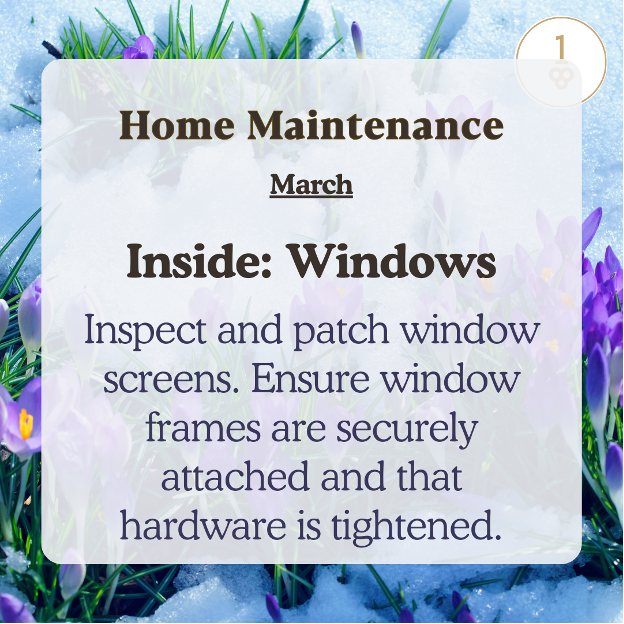
- Seal windows and doors: Check for drafts around windows and doors. Seal any gaps or cracks to improve the efficiency of cooling and heating systems.
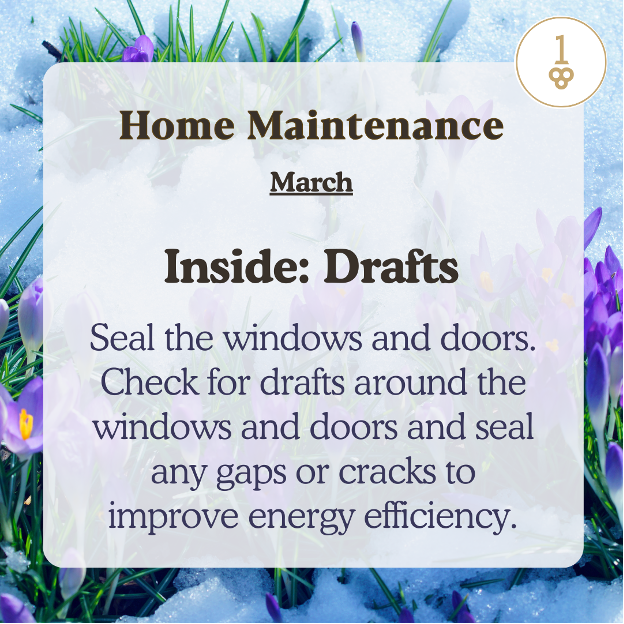
- GFCI Outlets: Test and reset the GFCI outlets to ensure they’re operating properly. GFCI outlets are typically installed in close proximity to water sources to protect against electric shock hazards. They’re designed to shut off power to the outlet if they detect that electricity is flowing along an unintended path and potentially creating a dangerous environment. These outlets contain a reset button which must be manually engaged once the safety mechanism is engaged.
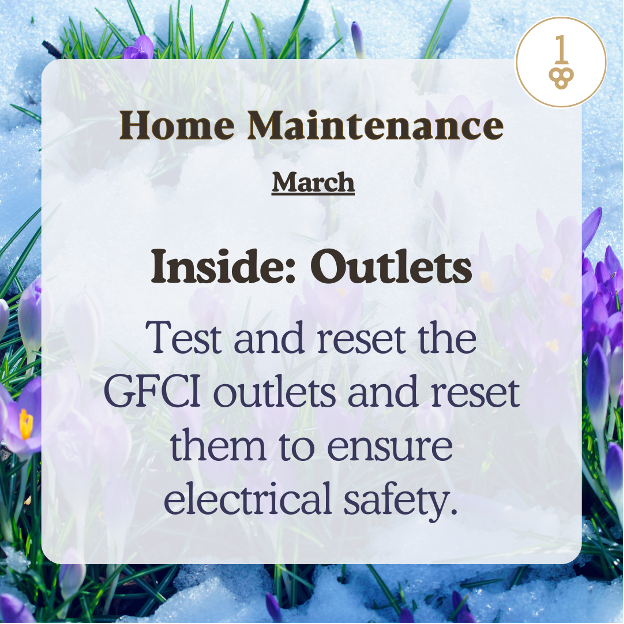
- Ceiling Fans: Inspect and clean ceiling fans from dust build-up over the wintertime. Clean and replace the bulbs as needed. Switch the direction of the blades to improve air quality and circulate warm air up and away from living spaces.

March Home Maintenance: Outside Tasks
- Gutters: Inspect and repair any damage that’s occurred to the rain gutters over the winter. Clean out any debris that has fallen or clogged up the water channel to ensure that water is draining properly away from the foundation of the home.
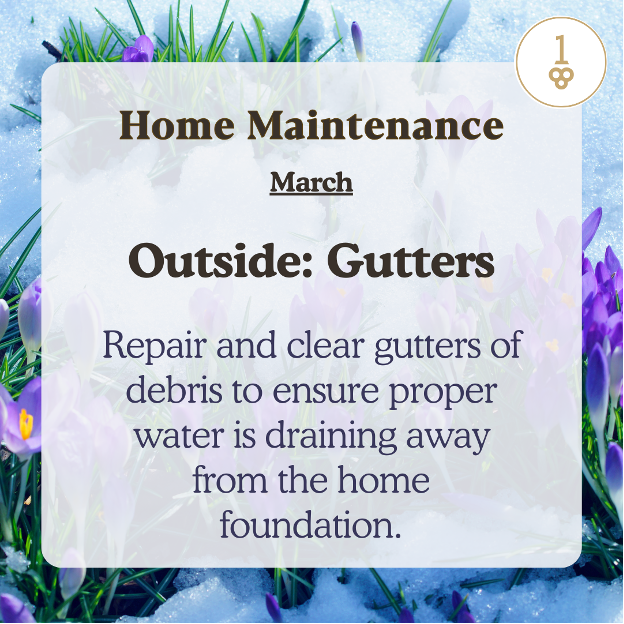
- Trees and Shrubs: Trim back any tree branches or shrub overgrowth that could cause roof, siding or foundation damage before the spring thaw. It’s healthy for most, not all, trees and shrubs to be pruned back now prior to the warmer weather when they begin to store nutrients in their branches and leaves again. Do your homework to ensure you’re pruning safely. Note any tree roots that have begun to disrupt walkways and any plants that have been uprooted in the inclement weather.
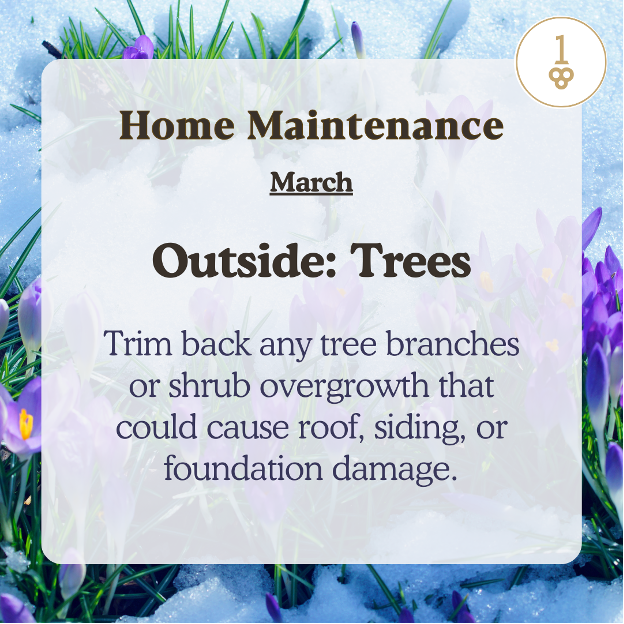
- Lawn Care: Remove debris, aerate and overseed the lawn now to prepare for healthy spring growth.
For professional lawn care, this is the time to schedule your first seasonal
appointment to plan out your yardscape for the coming months.
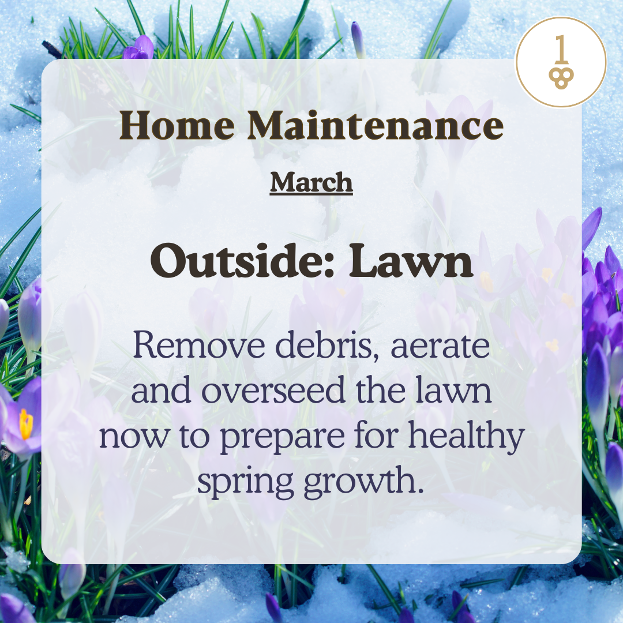
- Lighting: Check outdoor lighting fixtures for damage, including the bulbs, wirings, and casings. Replace burnt-out bulbs and add fixtures where necessary. Solar-powered outdoor lighting has evolved greatly in the last few years, which allows lighting to be added to fences, landscape, and other parts of property, where battery-operated lights may have been unreliable and where exterior electric lines weren’t feasible.
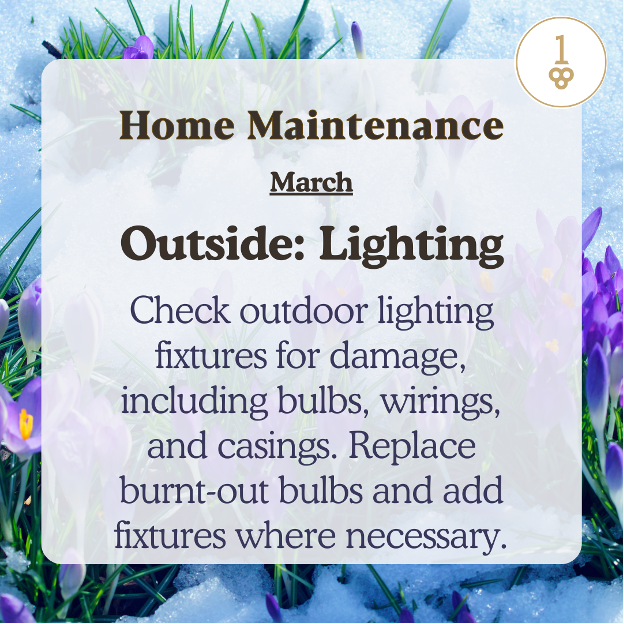
- Wooden Structures: Inspect all wooden surfaces for signs of rot and weathering. Replace the boards as needed. Apply a fresh coat of sealant or paint to protect against further damage.
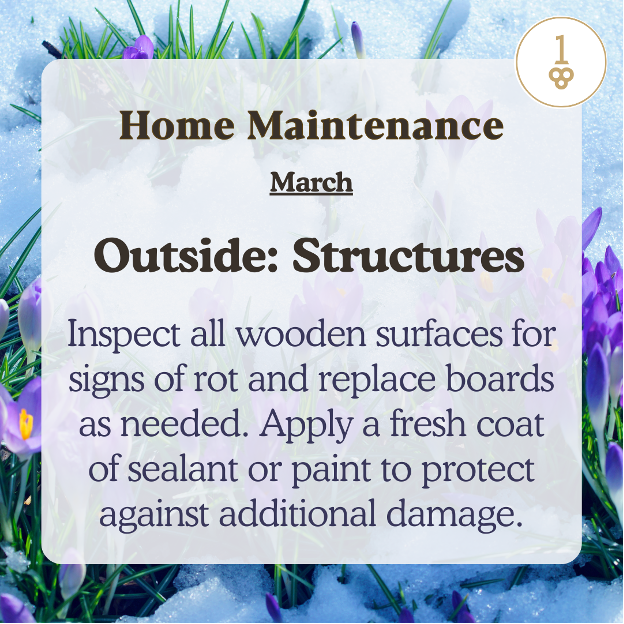
Final Thoughts
Sump pump maintenance often gets overlooked, but it is a critical task which homeowners must be vigilant about completing. Sump pumps remove excess water that accumulates due to inclement weather or through regular sewage removal. If a sump pump fails or malfunctions, the basement may flood, the home’s foundation may lose structural integrity due to moisture damage, and the air quality of the home can suffer due to mold growth and bacterial infiltration.

Ensure the sump pump turns on – pour water down the drain and listen for the activation and the removal of water. It’s usually very apparent when a sump pump is working properly. Clean the sump pit and remove any debris that could interfere with the pump’s operation. Inspect the pump and replace any parts that may have worn down over time.

Call a professional to conduct a thorough inspection and complete maintenance annually. Like many other home maintenance tasks, you will save money by investing in maintenance regularly instead of waiting for disaster to strike.
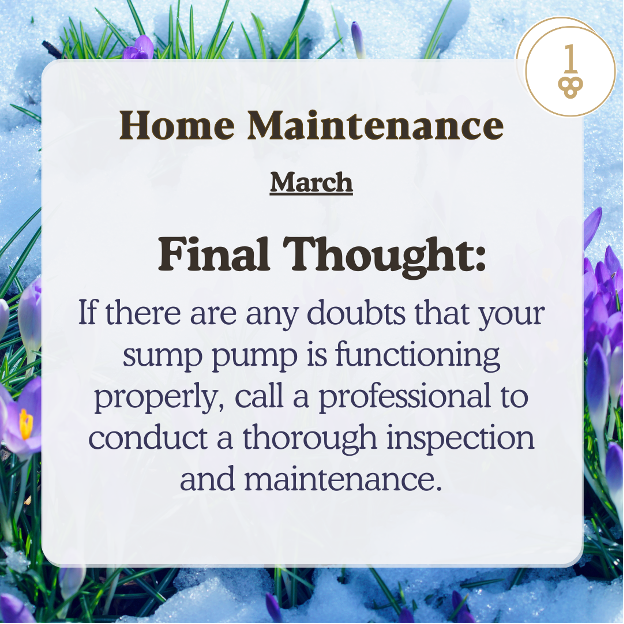
Related Article: February Home Maintenance Checklist










